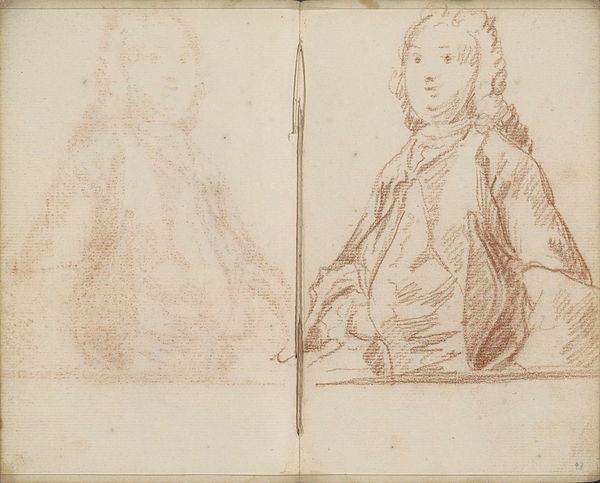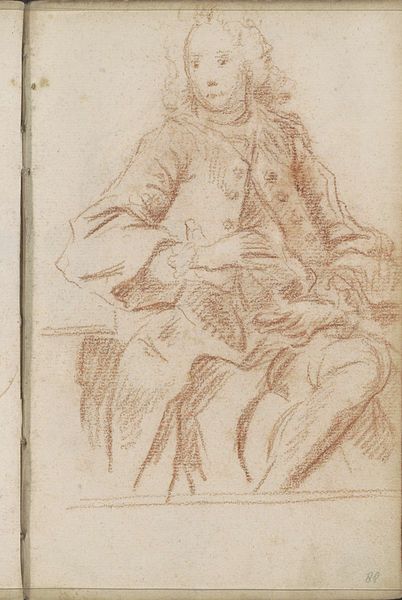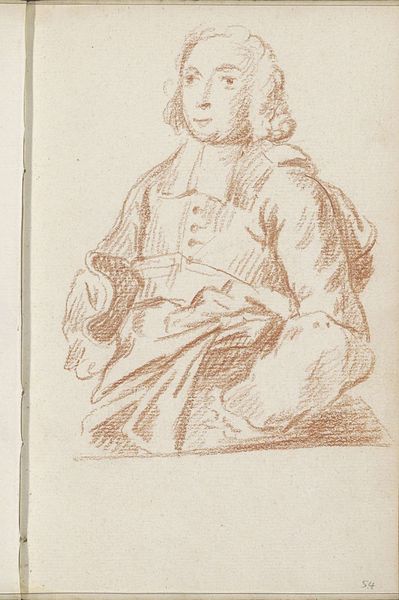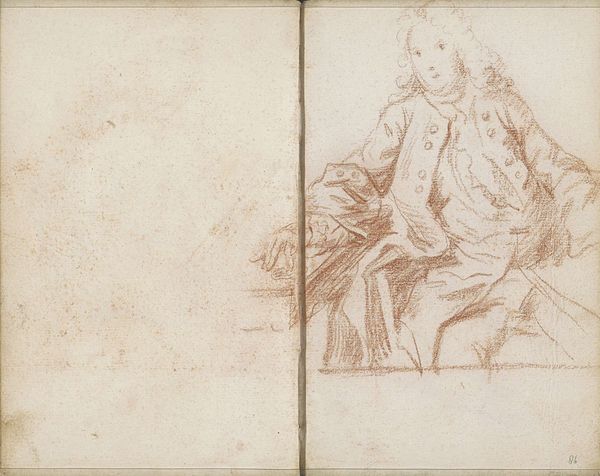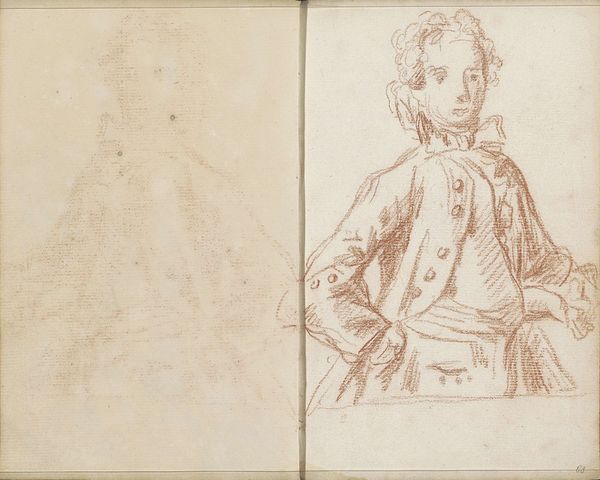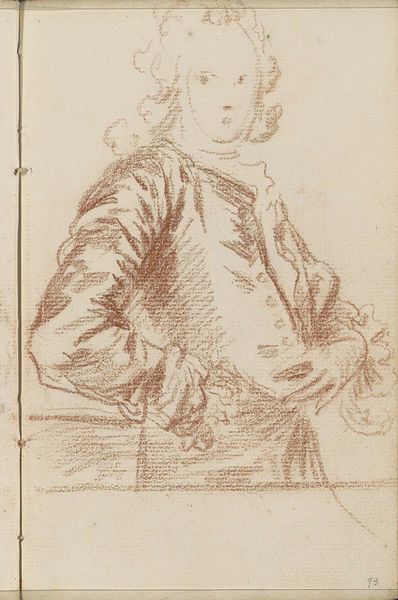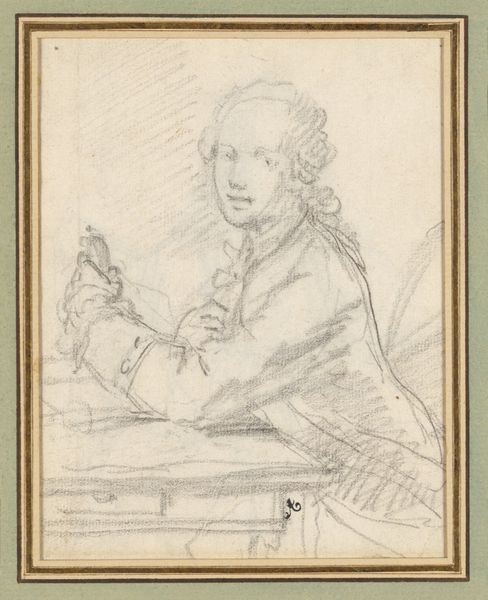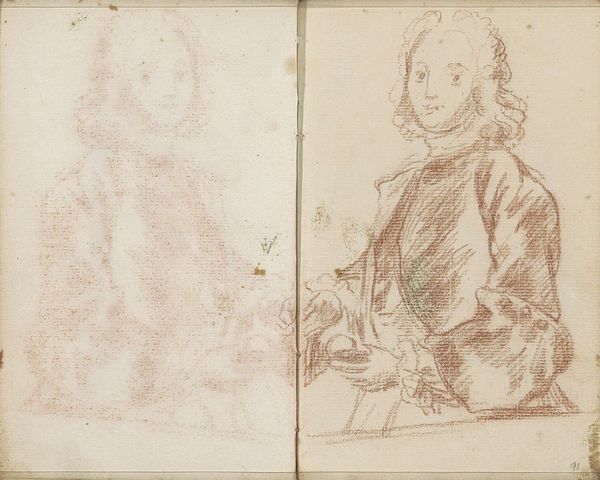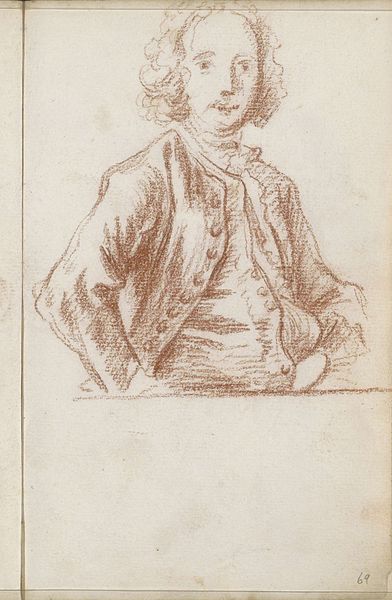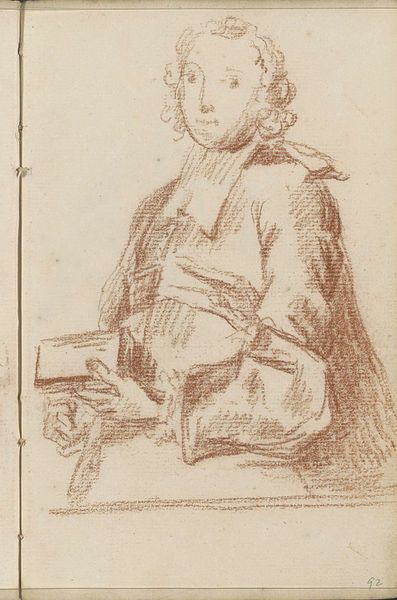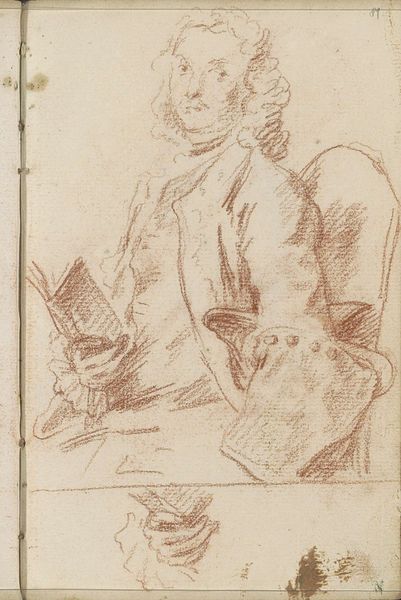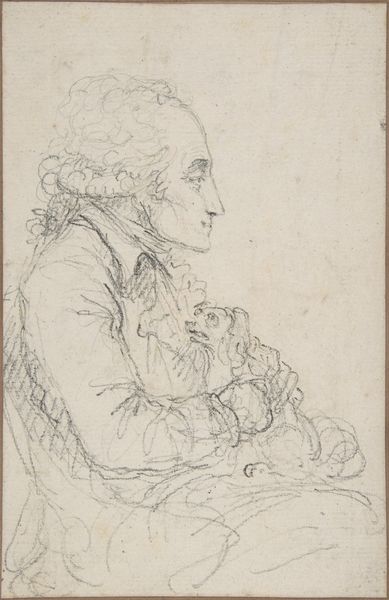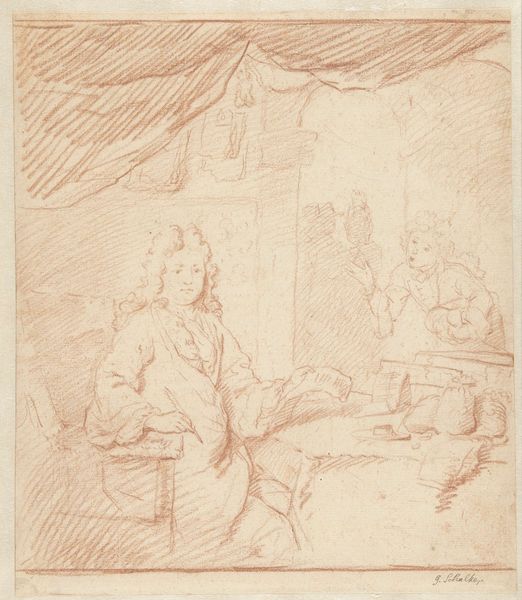
drawing, pencil
#
portrait
#
drawing
#
toned paper
#
light pencil work
#
baroque
#
pen sketch
#
pencil sketch
#
sketch book
#
figuration
#
personal sketchbook
#
ink drawing experimentation
#
pen-ink sketch
#
pencil
#
sketchbook drawing
#
sketchbook art
Copyright: Rijks Museum: Open Domain
Curator: Today, we're looking at "Standing Man with an Outstretched Hand," a pencil drawing from sometime between 1710 and 1772 by Petrus Johannes van Reysschoot. Editor: It feels very immediate. The lines are light, giving it an airy quality, almost ephemeral. And the reddish-brown tone of the pencil on the toned paper adds warmth. Curator: Note the economy of line in constructing this figure. You can practically see the artist experimenting, searching for form. The use of toned paper is crucial, isn't it? It creates an immediate mid-tone, allowing van Reysschoot to build up shadows and highlights efficiently. Editor: Absolutely. And the subject's dress—the waistcoat, the long coat, the powdered wig—these are all key markers of the period. But what interests me is the incomplete quality of the drawing. It looks like part of the notebook is blank. Curator: Exactly! Think about sketchbooks at the time. They were working documents, records of visual investigations, and sites of material production, so the drawing might never have been meant to be finished. It might have served a different purpose, perhaps for workshop practices. Editor: The composition focuses very deliberately on the figure's stance and that outstretched hand; it demands the viewer’s attention and almost seems to suggest offering or engagement. Curator: Or instruction? Maybe the drawing was intended as a guide, used as study material for apprentices on how to pose the body. Remember this was the Baroque era when art workshops were small scale industries where they often had specific and secret modes of production and transmission of knowledge. Editor: It makes you think about the countless hours of labor that went into producing a polished Baroque portrait. This offers a peek behind the curtain of art making, almost challenging that 'high' and 'low' art divide. Curator: Precisely. Van Reysschoot's drawing offers insight into artmaking, revealing the raw, material origins behind finished portraits, or history paintings, produced and consumed at the time. Editor: The lack of detailed rendering shifts the focus to gesture, pose, and form. Overall, I would describe this work as showing experimentation, rather than intending to make a definitive statement about the man portrayed in the drawing. Curator: And by considering how such knowledge was embedded in social settings, this preliminary sketch opens up into discussions of Baroque period portraiture more widely.
Comments
No comments
Be the first to comment and join the conversation on the ultimate creative platform.
